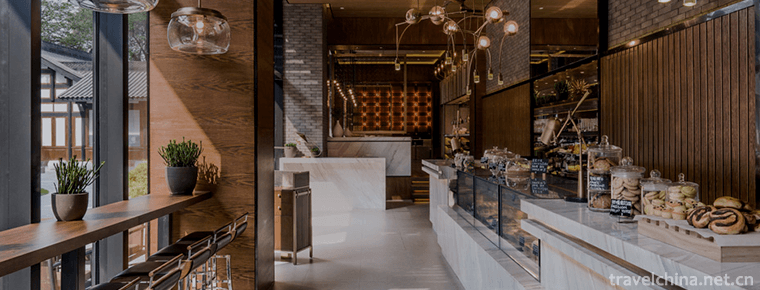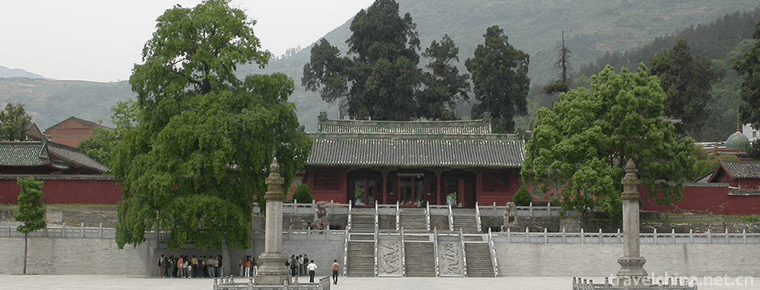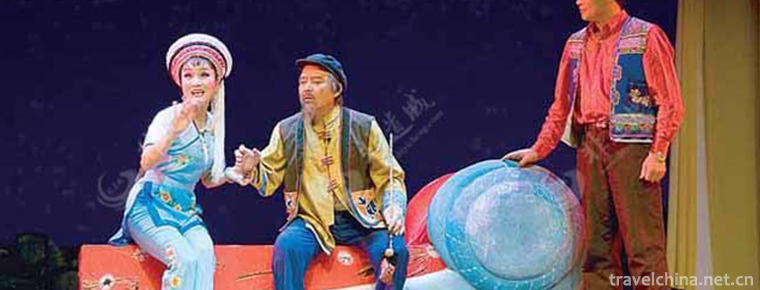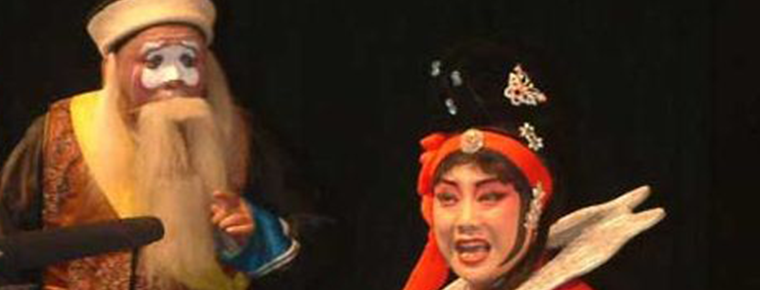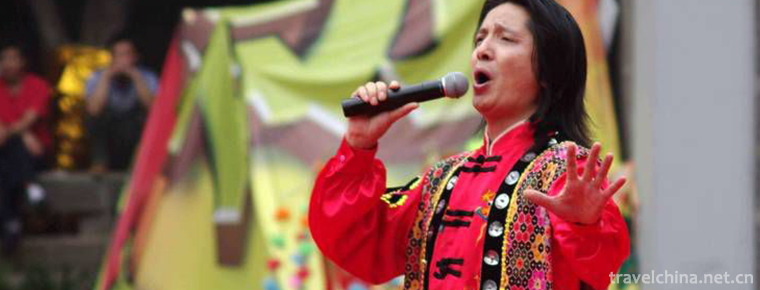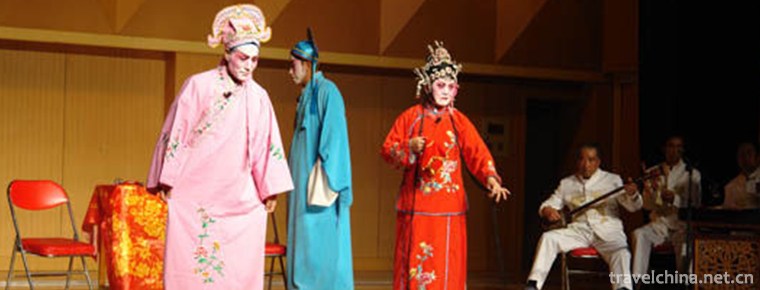Line lion
Line lion
Line lion is a local traditional lion dance in Ningde City, Fujian Province. Shiqiaotou village's line lion nine lions map originated from the celebration of the Lantern Festival on the 15th day of the first lunar month. It has a history of 300 years. At first it was a bamboo lion, from a single lion to three lions, five lions, seven lions, and finally to nine lions. Nine takes the meaning of "long-term" and abundant auspiciousness. The villagers of Shiqiaotou Village have been trying to improve the Nine Lions Map. "Last year, I added the hardware elements of Yongkang into the framework of the Lion Frame, so that people can think of Yongkang at a glance." Traditional folklore holds that lion dancing can drive away evil spirits. Therefore, every festival, such as the New Zhang Festival and the Spring Festival, like beating gongs and drums, lion dance to help celebrate.
The lion is the symbol of strength and will in the mind of the Chinese people. Therefore, the nine lions map, which has been excavated and refined, adds a mysterious color with oriental characteristics on the basis of its original vigor and strength.
On November 11, 2014, Lion Line was selected as the fourth batch of representative projects of national intangible cultural heritage approved by the State Council.
historical origin
Yongkang and the surrounding cities and counties of the people to the village as a unit of "Luohan Ban", according to the scheduled date to the square rock performances, climax, one day there are forty or fifty feet of "Daluohan" team above the rock worship Hugong, the villages show unique skills, colorful, spectacular. Some fight and dance clubs, practicing eighteen kinds of martial arts; some play and sing, singing and dancing. The performances include eighteen butterflies, nine lions, cruciferous lotus, mute madness, thirty-six plans, nine beads, waist drums and so on. This is a folk recreation and fitness activity, which is a grand festival for farmers themselves. Many excellent traditional programs such as Eighteen Butterflies and Nine Lions Tu have gone out of Fangyan and abroad and become world-class traditional art treasures.
"Nine Lions Picture" is one of the traditional lion dances in Yongkang City. It has distinctive national, folk and regional artistic characteristics, and has a high artistic taste and far-reaching artistic influence. Therefore, the inheritance and development of "Nine Lions Map" is of great strategic significance to inherit and develop traditional folk culture.
The old saying of Yongkang has a cloud: "See the Peixi lantern, play Shaoxing." On the 14th day of the first month, Yongkang Fangyan Town United nine villages, including the lantern of Paixi, the nine lions map of the first plate, and the bench dragon of 298 Bridge in Wenlou Village. It was magnificent, making Lantern Festival in Houtang.
Shiqiaotou Village Line Lion Nine Lions Tu is well-known for a hundred years. It is known as the "Oriental One Wonderful" Jiushigou, located in Tang Xianshiqiaotou Village in the north of Yongkang. It is 18 kilometers away from the city along the second Yongdong Line. The scenic spot is beautiful in scenery, beautiful in birds and flowers, and beautiful in scenery.
Line lion nine lions picture, also known as nine lions dance. It was created and arranged by Jimo folk artists in 1924. It was first performed in Jimo City during the Lantern Festival in the second year and was well received by the masses. Since then, it has remained as a traditional folk dance program.
Nine Lions Tu's performance line-up consists of 12 people and 9 lion props. Four of them hold two lionesses, seven each hold one lion, and the other hold embroidery balls to attract lions to dance. When the lions dance, accompanied by cheerful and exciting gongs and drums, seven "lions" around two "lionesses" in rhythm, jubilant jumping, sometimes rolling and pool, sometimes shaking their heads and tails and twisting their waists, every move shows the real lion's vigorous and powerful ferocious habits vividly and amazingly.
The performance form of Jiuliu Tu is divided into two parts: street walking and round field. "Street walking" is a kind of marching dance. During the course of walking, it performs such actions as "dragon wagging tail", "twisting rope" and "double lions". "Round field" is performed on the spot, mainly including "four doors fight", "embroidery ball lion", "group lion pool" and other dance movements.
Telecontrol Performance
Yongkang "Nine Lions" and "One Wonderful Chinese" National Silver Prize for Folk Art and other honors. "Nine Lions Picture" is one of the traditional lion dances in Yongkang City. It has distinctive national, folk and regional artistic characteristics, and has a high artistic taste and far-reaching artistic influence.
Nine lions and one color ball were all directed by 11 women behind the scenes through 38 20-meter-long ropes during the "Nine Lions Picture" performance, which was much more difficult than puppet show and shadow play. Usually in the exciting drum music, the lion king takes the lead in jumping out. He flutters up and down, jumps left and right, holds the ball on the long pole, dances for a while, and then leads four lions in the lion cage. Driven by the Lion King, the little lion turned his head and put on his body, jumping and scratching his feet. Next, two doorkeepers sprang up from the top of the cage, and seven lions danced in groups. The most wonderful thing is that a color ball above the lion cage suddenly opens and two young lions come out. They slowly climb up to the lion king and let the Lion King caress intimately. 9 Lion group dancing is not only orderly and consistent, but also vivid, vivid and vivid in the movements of flutter, jump and scratch. Every time when people are amazed and intoxicated, the Lion King begins to call for wind and rain, swallow clouds and smoke, and the lion cage top is spitting out showers of water in the dragon mouth of the beads. The performance venue immediately drops, which is taken from the good omen of "smooth weather" and adds to its magical color. In 1999, the renovated "Nine Lions Picture" was transmitted to Scola Cable Television Network in the form of TV feature films. This unique Chinese folk art really rushed out of the country and went to the world.
Characteristic Style
Line lion, also known as Lion Drawing, is now preserved in Huotong Town, Ningde, Fujian Province. Locals call it "Lion Striking". It is a unique form of folk entertainment, and also a folk acrobatics program with a unique style.
According to historical records, the local "February 2" Lion show is one of the most distinctive programs in the "February 2" Lighting Festival. Since the middle and late Ming Dynasty, Huo Tong's Chen surname Lion Line has become an important part of the local festival culture.
Before the performance, the production of the stage, the lighting effect and the rope layout were all manually operated. The lion's whole body is made of various materials, with bamboo as the frame, which is filled with cotton, cloth, rubber and so on. The lion's hair is made of special colored plastic silk. After the reform of folk artists in past dynasties, the size of the line lion has developed from small puppet to huge and heavy, the structure has changed from simple to complex, and the production technology has also been greatly developed and improved. The ball held by the line lion is delicate and dexterous. The inside of the net basket of the big ball is covered with small balls which rotate freely and are equipped with lights.
Huo Tong Chen's line lion manipulates the lion by rope to perform various actions, including literary and martial arts. Its performances include four forms: single lion (male), double lion (male and female), three lions (one mother and two sons), and five lions (one mother and four sons). Line lion performances were first performed along the way, dancing while walking, and then turning to fixed stage performances. Through the practical creation of folk artists in past dynasties, Line Lion has become more and more expressive. It can perform various postures, such as sitting, squatting, awakening, stretching, climbing and so on. Lion play alone has the actions of seeking, chasing and getting the ball. Huo Tong Chen's surname Lion Line has the family inheritance characteristics of male and female inheritance.
In 2006, Huo Tong Chen's surname Lion Line was listed in the first batch of intangible cultural heritage. Many journalists at home and abroad have witnessed the elegant picture of the line lion, Huo Tong Chen's surname is the line lion ancestor, which is still hanging intact on the second floor of Chen's ancestral residence.
Huo Tong Town, which has the relics of Taoism and bones, bears a long history of thousands of years and is a testimony of the southward migration culture of the Chinese nation since the Tang and Song Dynasties. Simple townspeople, with a long history of folk culture, present a unique cultural town. The Huo Tong Lion is a microcosm of the ancient town culture.


-
The Temple House Bo she Hotel
Located in Chengdu, the Bosch is a luxury hotel with a unique style, which combines the beauty of traditional and modern design. The shape design is charming and energetic, reflecting the city's legen.
Views: 268 Time 2018-12-16 -
Bao en Temple Pingwu
Pingwu Baoen Temple is located in Pingwu County, Sichuan Province. It is 184 kilometers away from Mianyang City and 300 kilometers away from Chengdu. Located in the northeast corner of the county town.
Views: 144 Time 2019-02-07 -
Tianma Island Tourist Area
Shandong Tianma Island Tourist Area is composed of Ma Qi Mountain and Tianhu Lake. It is located 16 kilometers northeast of Junnan County Town, Linyi City..
Views: 340 Time 2019-02-21 -
Baxian Yaochi Party
Baxian Yaochi gathering is a traditional dish in Tai'an, Shandong Province, which belongs to the Shandong cuisine family. Egg white is the main material for Baxian Yaochi gathering..
Views: 129 Time 2019-03-27 -
Ba Shan Bei Er Song
Bashan Beibei Song refers to a traditional folk song which was produced and spread in the area under the jurisdiction of Bazhong City at the southern foot of Micang Mountain in northeastern Sichuan Pr.
Views: 279 Time 2019-04-03 -
Bai opera
After 1949, on the basis of blowing tunes, Bai folk opera "Dabenqu" tunes were further enriched and improved, renamed "Baiju". The Lyric forms are basically sung in Bai language an.
Views: 196 Time 2019-04-03 -
Two strands
Erguxian is an ancient traditional opera, which was formed in Song Dynasty and has a history of more than 500 years. The two-strand string is evolved from folk minor,.
Views: 282 Time 2019-04-28 -
Guwo Yushu Samurai Dance
Samurai dance is a unique style of etiquette folk dance spread in Yushu. It is called Guowa (or Guowa) in Tibetan. Guo refers to weapons in Tibetan. It means warriors with weapons. Wo refers to dancer.
Views: 118 Time 2019-05-02 -
Shizhu Tujia Luoer Diao
Shizhu Tujia Luoer Diao originated from Shizhu Tujia Autonomous County, Chongqing. It is a folk song of Luoer tune, which is popular among the Han and Tujia nationalities in southeastern Chongqing. It.
Views: 282 Time 2019-06-15 -
Tongwei Opera
Tongwei Xiaoqu Opera is a kind of traditional Xiaoqu Opera popular in Tongwei County. In the Ming and Qing Dynasties, Tongwei folk artists absorbed various flavors of Longdong Daoqing, Wanwanwanqiang .
Views: 194 Time 2019-06-21 -
Administrative division of Deyang
Deyang City has 6 county-level administrative divisions (Municipal District 2, county-level city 3, county-1), and 84 township level administrative divisions (street 13, town 67, township 4). It covers an area of 5911 square kilometers and has a population of 3.92 million..
Views: 323 Time 2020-12-14 -
Plant resources in Leshan
Leshan City is located in the middle subtropical zone, which is located in the southwest of Sichuan Basin and Hengduan Mountain area. Emei Mountain is the most representative area. There are 1452 species, 585 genera and 141 families of seed plants.
Views: 88 Time 2020-12-17
